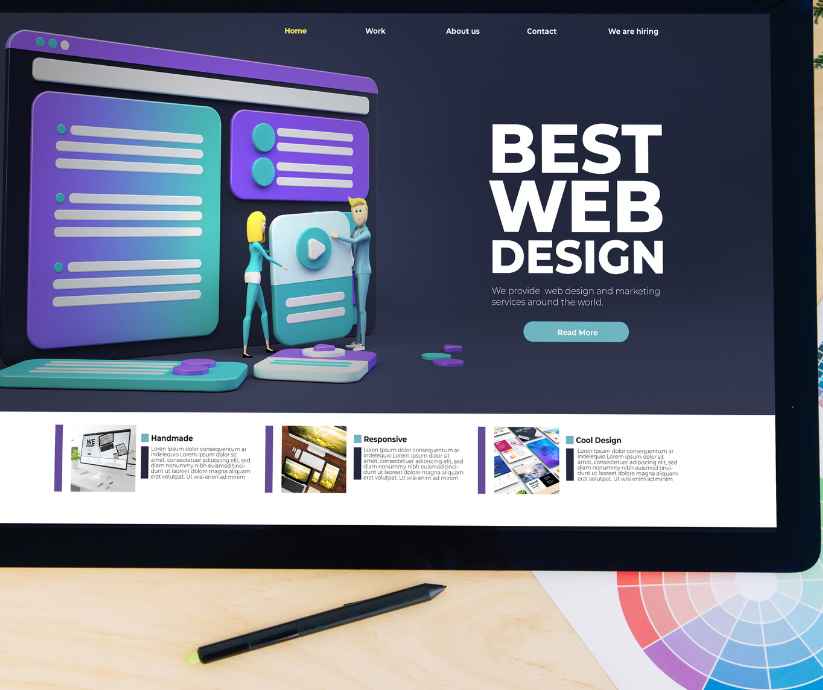In the digital landscape, where websites and applications have become an integral part of our daily lives, design trends continuously evolve to enhance user experiences. One such trend that has gained significant popularity in recent years is dark-mode web design. Dark mode, with its sleek and sophisticated aesthetic, offers a refreshing alternative to the traditional light mode interface. Let us delve into the world of dark mode web design, exploring its benefits, implementation techniques, and its impact on user engagement.
Dark mode, as the name suggests, presents a darker colour scheme for websites and applications. Instead of the conventional bright backgrounds, dark mode employs predominantly dark hues such as black, deep grey, or navy blue, with lighter text and elements to ensure readability. This design choice not only offers an aesthetically pleasing visual experience but also provides several practical advantages.

One of the primary benefits of dark-mode web design is its impact on eye strain and fatigue. Traditional light mode interfaces can be harsh on the eyes, especially when viewed in low-light environments. The contrast between bright backgrounds and dark text can cause visual discomfort, leading to eye strain over prolonged usage. Dark mode, on the other hand, reduces eye strain by emitting less light, resulting in a more comfortable viewing experience.
Additionally, dark mode can enhance the readability of text and content. The contrast between dark backgrounds and light text improves legibility, making it easier for users to consume information. This can be particularly beneficial for users with visual impairments or those who prefer high-contrast interfaces.
Another advantage of dark mode web design lies in its potential to conserve battery life, particularly on devices with OLED or AMOLED displays. These display technologies allow individual pixels to emit light, meaning that black pixels are essentially turned off. By utilizing dark backgrounds, websites and applications in dark mode require less power to illuminate the screen, resulting in reduced battery consumption and improved battery longevity.

Implementing dark mode in web design involves more than just changing colour palettes. Here are a few considerations and techniques to ensure an optimal dark mode experience:
- User Preference: Dark mode should be offered as an option rather than a default setting. While many users prefer dark mode for its visual appeal and practical benefits, others may still prefer the classic light mode. Providing users with the ability to choose between the two modes ensures inclusivity and personalization.
- Color Contrast: Maintaining a proper balance between dark backgrounds and light text is crucial for readability. Optimal contrast ratios should be adhered to, ensuring that text and elements are easily distinguishable from the background. Careful consideration must be given to colour choices to avoid straining the eyes or sacrificing legibility.
- Consistency: Dark mode should be implemented consistently across the entire website or application. Inconsistencies can create a disjointed user experience, leading to confusion and frustration. Paying attention to details, such as icons, buttons, and interactive elements, ensures a seamless transition between light and dark modes.
- Accessibility: Dark mode should be designed with accessibility in mind. Considerations such as text size, font choice, and proper hierarchy of information must be taken into account to accommodate users with varying visual abilities.
The rise of dark-mode web design has been met with enthusiasm by users and designers alike. Not only does it offer a visually appealing alternative to the traditional light mode, but it also provides tangible benefits in terms of eye comfort, readability, and energy efficiency.

Furthermore, the dark mode has the potential to evoke certain emotions and create unique atmospheres for websites and applications. The sleek and elegant nature of dark mode can be harnessed to convey a sense of sophistication, mystery, or even a futuristic vibe. This versatility allows designers to experiment with creative concepts and align the overall design with the brand’s identity. As with any design trend, there are potential challenges associated with implementing dark mode. Adapting existing websites and applications to support dark mode can be a complex task, especially for platforms with extensive design systems and user-generated content. Careful planning, testing, and collaboration between designers and developers are crucial to ensure a smooth transition and consistent user experience.
In conclusion, dark-mode web design has emerged as a compelling trend, offering numerous advantages for users and designers. Its ability to reduce eye strain, improve readability, and conserve battery life has contributed to its widespread adoption. By considering the user’s preferences, maintaining proper contrast, ensuring consistency, and focusing on accessibility, designers can create immersive and engaging dark-mode experiences. As we continue to embrace the shadows, dark-mode web design will likely remain a prominent feature of the digital landscape for years to come.

